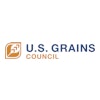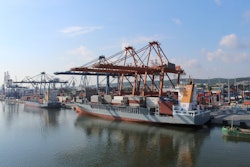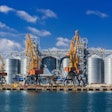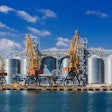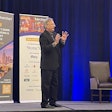
The United States' top railroads must improve their performance by finding ways to hire more crewmembers, according to Rick Paterson, managing director ofLoop Capital Markets.
Speaking atNational Grain and Feed Association's (NGFA)Country Elevator Conferencein St. Louis on December 7, Paterson graded theUnion Pacificrailroad a D-in performance from a user experience perspective.
"The grain network can't be ring-fenced from the broader network, which is struggling and hasn't yet meaningfully inflected for the better," Paterson said.
Paterson gaveBNSFa passing grade of C, stating its network is fluid, but erratic, and while recent on-time performance is poor, the railroad is "getting its house in order."
Norfolk Southern(NS) andCSXboth scored a B for this year's performance, according to Paterson. Like all U.S. railroads, NS is suffering from crew shortages and mismatched equipment positioning, resulting in mid-grade performance satisfaction.
Meanwhile, CSX "is carrying the best recovery momentum of the big-four U.S. networks, and it's just some clean up in dwell at origin that needs to take place in its grain network," Paterson said.
On-time performance was a critical factor in Paterson's grading of the main U.S. railroads, which averaged around 60% to 80% over the four weeks prior to Thanksgiving 2022.
Still recovering from COVID issues
Paterson said American railroads are still recovering from labor issues stemming from having to furlough workers in 2020 during the COVID-19 pandemic. It may take years to recruit, hire and train enough labor to match the pre-COVID workforce.
Poor performance can be traced back to the second and third quarters of 2020, when the railroads were caught off-guard by strong shipping demand after they'd already laid off much of their workforce.
The pandemic's great resignation then thwarted the restoration of crew capacities by accelerating attrition and compressing the furlough recall rate -- the percentage of furloughs that come back to the railroad when called to work again.



